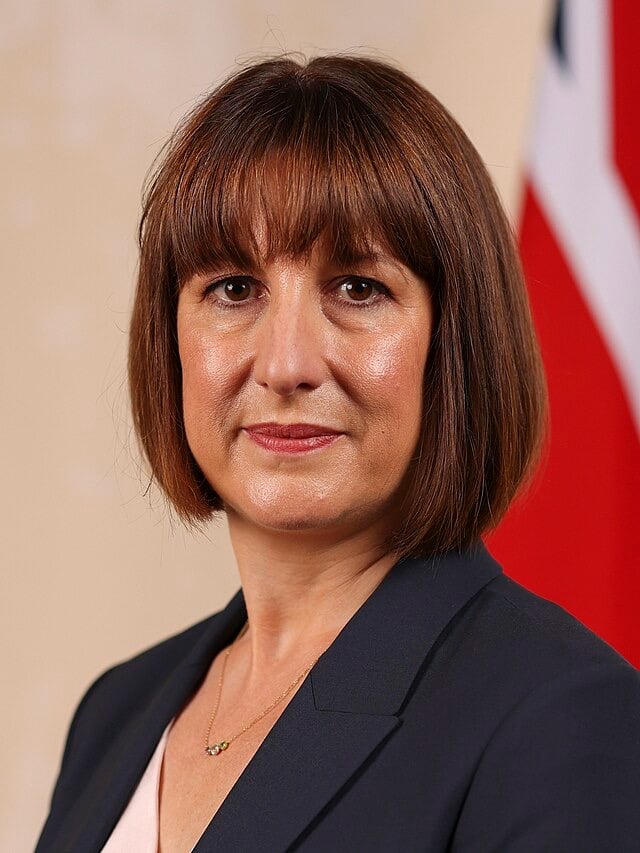Chancellor Rachel Reeves is preparing to slash up to 50,000 civil service jobs as part of a major Whitehall shake-up aimed at shrinking the size of the state, according to government insiders.
The dramatic cuts would see approximately 10% of roles scrapped by 2030, reducing the civil service from its current 515,000 full-time equivalent posts to around 450,000 – a level not seen since before the Brexit referendum.
Officials briefed on negotiations for the upcoming spending review told the Financial Times they “wouldn’t be surprised if the number comes down to 450,000 by 2030,” suggesting the Chancellor is serious about delivering on promises to streamline government operations.
The move comes as Prime Minister Sir Keir Starmer seeks to reform what he recently described as an “overcautious and flabby” state, with Ms Reeves targeting a 15% reduction in government running costs by the end of the decade.
Ballooning Numbers
The civil service has expanded significantly in recent years, growing from approximately 380,000 posts in June 2016 to its current level of 515,000. This 35% increase was driven largely by the demands of Brexit implementation and the COVID-19 pandemic response, which required substantial additional administrative capacity.
The proposed cuts would essentially reverse much of this growth, returning staffing levels closer to pre-Brexit numbers, though still above the historic lows seen during the Cameron-Osborne austerity years.
June Spending Review Looms
Ms Reeves is set to deliver her comprehensive review of Whitehall departmental spending on June 11, with ministers currently engaged in intense last-minute negotiations over their budgets through to 2029. The review is expected to set out detailed plans for achieving the efficiency savings and headcount reductions.
A total of about 450,000 civil servants by the end of the decade is about right,” another official told the FT, suggesting there is broad agreement within government about the target figure.
The Chancellor outlined her vision for a leaner state machine in her Spring Statement in March, emphasizing the need to modernize government operations and eliminate inefficiencies. The 15% cost reduction target would represent one of the most ambitious efficiency drives in recent decades.
Union Concerns and Implementation Challenges
While the government has not officially confirmed the job cut figures, any move to reduce the civil service by 50,000 posts would likely face significant opposition from public sector unions. The FDA and PCS unions, which represent civil servants, have previously warned against arbitrary headcount targets and called for proper consultation on any workforce changes.
The challenge for Ms Reeves will be delivering these cuts without compromising essential government services or the implementation of Labour’s policy agenda. Previous attempts at civil service reduction have often struggled to balance efficiency gains with maintaining service quality.
Political Context
The proposed cuts mark a significant moment for Labour, traditionally seen as more sympathetic to public sector employment than their Conservative predecessors. However, with public finances under severe strain and manifesto commitments to avoid tax rises on working people, the Chancellor appears to be prioritizing efficiency savings as a key tool for fiscal management.
Sir Keir’s criticism of an “overcautious and flabby” state suggests the government is prepared to challenge traditional Labour orthodoxies about the size of the public sector, potentially positioning itself as fiscally responsible while still distinct from Conservative austerity policies.
Departmental Impact
The scale of the proposed reductions would require careful management across all government departments. Some areas that expanded significantly for Brexit – such as the Home Office’s immigration functions and the Department for International Trade – may face particularly close scrutiny.
Similarly, departments that grew their digital and data capabilities during the pandemic may need to consolidate these gains while still reducing overall headcount. The Cabinet Office, which has traditionally led on civil service reform, is likely to play a central coordinating role.
Timeline and Method
With a 2030 target date, the reductions would likely be phased over the remainder of the decade, potentially through a combination of natural attrition, voluntary redundancy schemes, and recruitment freezes rather than compulsory redundancies.
This gradual approach would allow departments time to redesign processes, invest in technology, and ensure remaining staff have the skills needed for a more efficient operation. However, it also risks creating uncertainty and damaging morale if not carefully managed.
Economic Implications
Removing 50,000 jobs from the public sector could have broader economic implications, particularly in regions where civil service employment is a significant part of the local economy. Cities like Cardiff, Newcastle, and parts of Scotland that host major government offices could feel the impact disproportionately.
The government may need to consider these regional effects as part of its broader “leveling up” agenda, potentially accelerating plans to relocate remaining civil service jobs outside London and the Southeast.
As the June 11 spending review approaches, all eyes will be on Ms Reeves to see whether these reported targets become official policy. If confirmed, the plan would represent one of the most significant reshaping of the civil service in a generation, testing Labour’s ability to deliver on its efficiency promises while maintaining effective government services.
The success or failure of this initiative could define perceptions of Labour’s economic credibility and shape the future structure of British government for years to come.
Image credit: Rachel Reeves Official Cabinet Portrait, July 2024 (cropped) by Lauren Hurley / No 10 Downing Street, licensed under the Open Government Licence v3.0.



